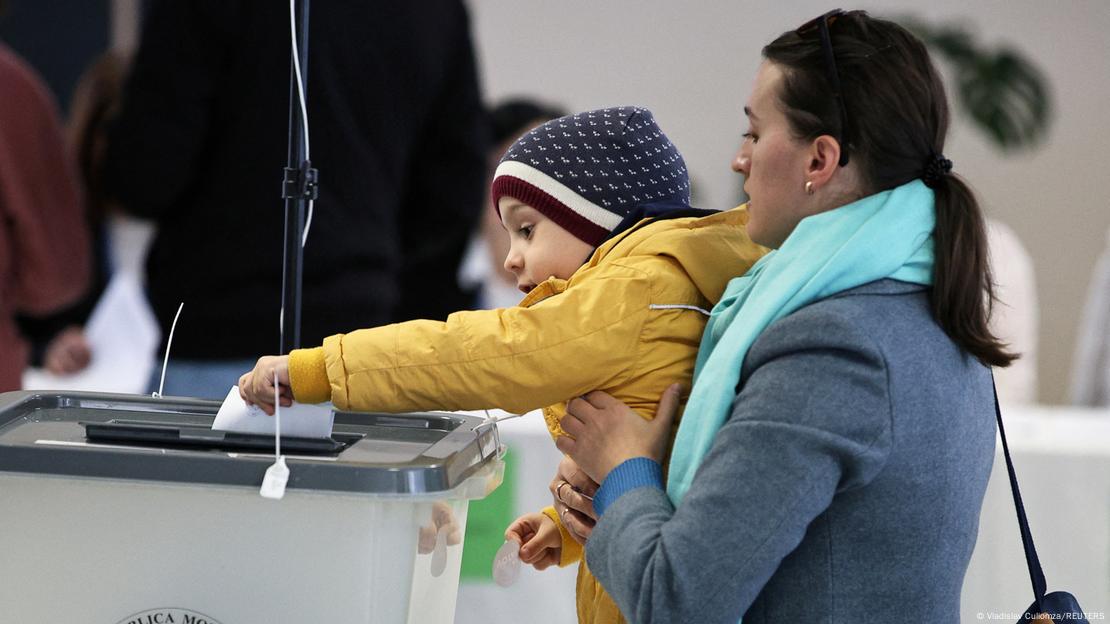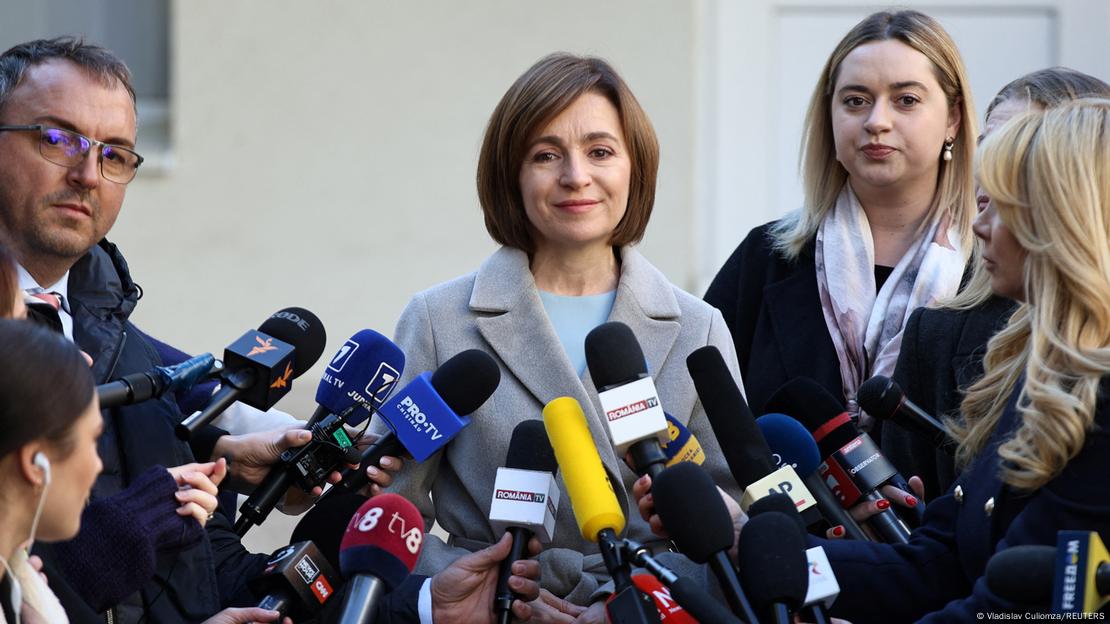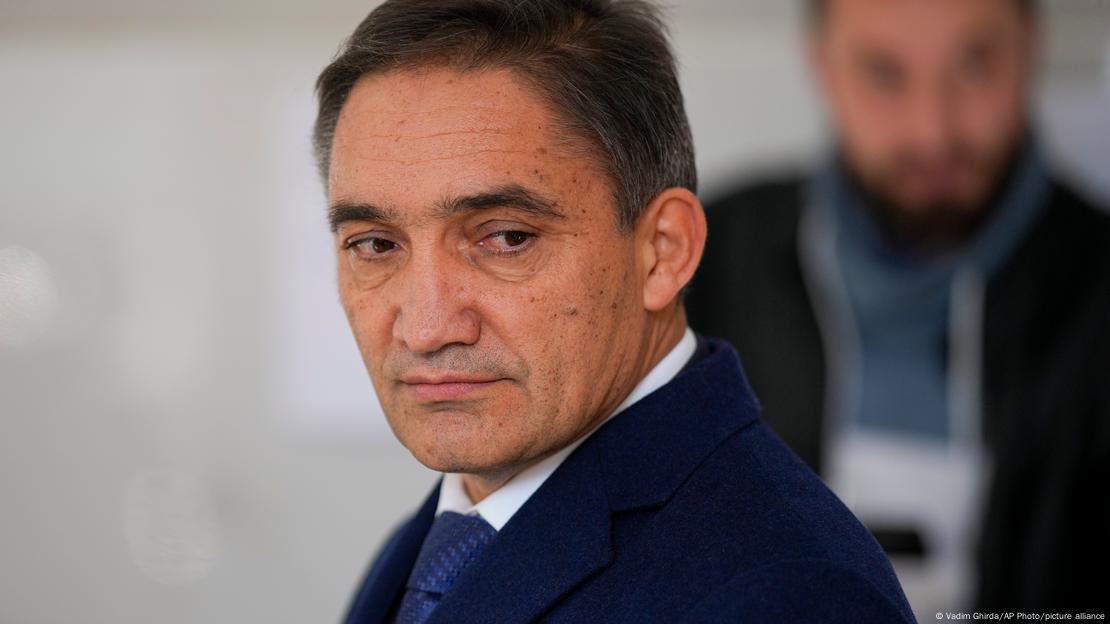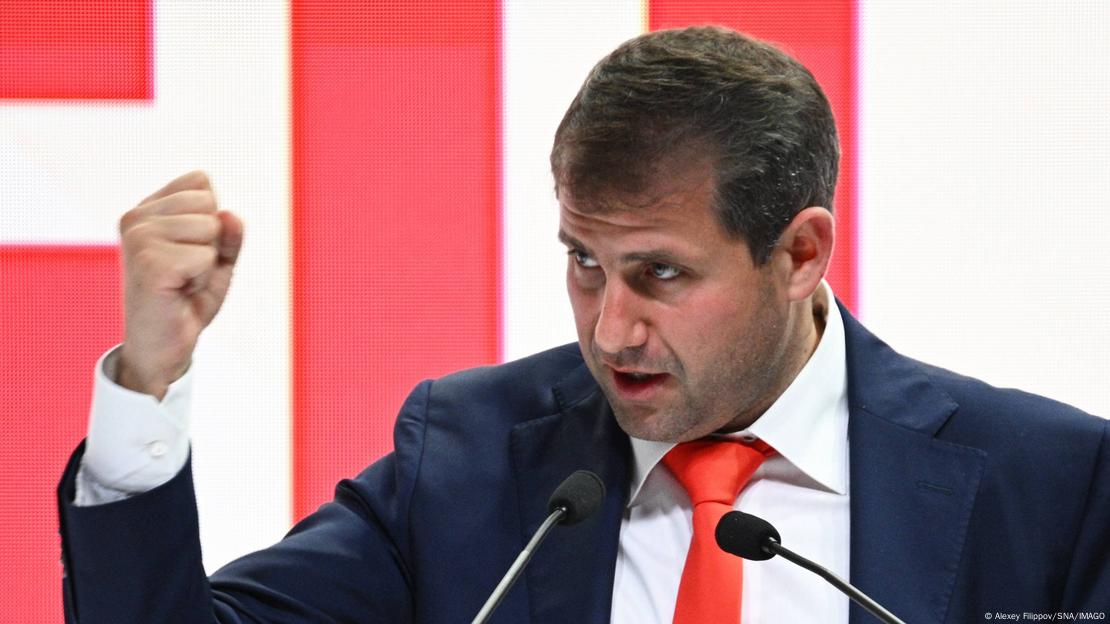AFP
Tue 5 November 2024

Villagers flee a volcano eruption in eastern Indonesia
(ARNOLD WELIANTO/AFP/AFP)
A volcano in eastern Indonesia erupted again on Tuesday, blowing an ash column into the sky a day after it spewed fireballs on nearby villages that killed nine people.
Mount Lewotobi Laki-Laki, a 1,703-metre (5,587-feet) twin volcano located on the popular tourist island of Flores, shot flaming rocks at residential areas overnight Monday, setting wooden houses on fire and pockmarking the ground.
Authorities said it killed at least 10 people and injured dozens more, but on Tuesday revised the toll down by one.
Lewotobi Laki-Laki erupted again on Tuesday, shooting ash a kilometre into the sky (0.6 miles), according to an AFP journalist near the volcano.
There were no immediate reports of fresh damage to villages surrounding the crater.
The local search and rescue agency in the town of Maumere on Flores said in a statement that no residents had been reported missing, but rescuers were still combing through the volcanic debris as a precaution.
Some nearby residents who appeared to have stayed in their homes were evacuating in trucks after the latest eruption, the journalist said.
Authorities on Monday raised the volcano's alert level to the highest of a four-tiered system, telling locals and tourists not to carry out activities within a seven-kilometre (4.3-mile) radius of the crater.
Roofs of houses collapsed after they were hit by volcanic rocks, and locals were forced to shelter in communal buildings after the eruptions.
Residents described their horror when they realised they were in the shadow of an eruption, which they said was initially masked by adverse weather.
"I saw flames coming out and immediately fled. There were ashes and stones everywhere," said 32-year-old hairdresser Hermanus Mite.
The disaster mitigation agency said more than 10,000 were affected.
There were multiple tremors and eruptions at the volcano last week, sending columns of ash between 500 and 2,000 metres (6,500 feet) into the sky several days in a row.
Laki-Laki, which means "man" in Indonesian, is twinned with a calmer volcano named after the Indonesian word for "woman".
Indonesia, a vast archipelago nation, experiences frequent eruptions due to its position on the Pacific "Ring of Fire", an area of intense volcanic and seismic activity.
Indonesian rescuers dig through volcanic ash after eruption kills 9 and destroys buildings
JAKOBUS HERIN
Updated Tue 5 November 2024

![]()
![]()
![]()
![]()
![]()
![]()
![]()
Indonesia Volcano
Houses are seen damaged from the eruption of Mount Lewotobi Laki-Laki in East Flores, Indonesia, Monday, Nov. 4, 2024. (AP Photo)
A volcano in eastern Indonesia erupted again on Tuesday, blowing an ash column into the sky a day after it spewed fireballs on nearby villages that killed nine people.
Mount Lewotobi Laki-Laki, a 1,703-metre (5,587-feet) twin volcano located on the popular tourist island of Flores, shot flaming rocks at residential areas overnight Monday, setting wooden houses on fire and pockmarking the ground.
Authorities said it killed at least 10 people and injured dozens more, but on Tuesday revised the toll down by one.
Lewotobi Laki-Laki erupted again on Tuesday, shooting ash a kilometre into the sky (0.6 miles), according to an AFP journalist near the volcano.
There were no immediate reports of fresh damage to villages surrounding the crater.
The local search and rescue agency in the town of Maumere on Flores said in a statement that no residents had been reported missing, but rescuers were still combing through the volcanic debris as a precaution.
Some nearby residents who appeared to have stayed in their homes were evacuating in trucks after the latest eruption, the journalist said.
Authorities on Monday raised the volcano's alert level to the highest of a four-tiered system, telling locals and tourists not to carry out activities within a seven-kilometre (4.3-mile) radius of the crater.
Roofs of houses collapsed after they were hit by volcanic rocks, and locals were forced to shelter in communal buildings after the eruptions.
Residents described their horror when they realised they were in the shadow of an eruption, which they said was initially masked by adverse weather.
"I saw flames coming out and immediately fled. There were ashes and stones everywhere," said 32-year-old hairdresser Hermanus Mite.
The disaster mitigation agency said more than 10,000 were affected.
There were multiple tremors and eruptions at the volcano last week, sending columns of ash between 500 and 2,000 metres (6,500 feet) into the sky several days in a row.
Laki-Laki, which means "man" in Indonesian, is twinned with a calmer volcano named after the Indonesian word for "woman".
Indonesia, a vast archipelago nation, experiences frequent eruptions due to its position on the Pacific "Ring of Fire", an area of intense volcanic and seismic activity.
Indonesian rescuers dig through volcanic ash after eruption kills 9 and destroys buildings
JAKOBUS HERIN
Updated Tue 5 November 2024

Indonesia Volcano
Houses are seen damaged from the eruption of Mount Lewotobi Laki-Laki in East Flores, Indonesia, Monday, Nov. 4, 2024. (AP Photo)
MAUMERE, Indonesia (AP) — Rescue workers on Tuesday sifted through smoldering debris and thick mud in search of survivors, a day after a volcano on Indonesia’s island of Flores erupted, killing at least nine people with its searing lava and ash.
Mount Lewotobi Laki Laki spewed thick brownish ash as high as 2,000 meters (6,500 feet) and searing lava, gravel and ash were thrown up to seven kilometers (4.3 miles) from its crater, blanketing nearby villages and towns with tons of volcanic debris and forcing residents to flee.
The National Disaster Management Agency on Tuesday lowered the death toll from an earlier report of 10, saying a victim trapped under tons of debris in a collapsed house who was feared dead was rescued in critical condition. The agency said 63 other people were hospitalized, 31 of them with serious injuries.
More than 2,400 villagers streamed into makeshift emergency shelters after Monday's eruption that burned down seven schools and 23 houses, including a convent of nuns, on the majority-Catholic island, said the agency’s spokesperson, Abdul Muhari.
Smoldering debris, thick mud and a power blackout hampered the evacuation and search efforts, said Kensius Didimus, a local disaster agency official.
“We’ll do everything we can to evacuate villagers by preparing trucks and motorbikes for them to flee at any time,” he said, adding that the debris and lava mixed with rainfall formed thick mud that destroyed the main roads on the island.
Authorities warned the thousands of people who fled the volcano not to return during Tuesday’s lull in activity. But some were desperate to check on livestock and possessions left behind. In several areas, everything — from the thinnest tree branch to couches and chairs inside homes — was caked with ash.
“We were all ordered to leave our village, because the volcano alert status had reached its highest,” said Andreas, who uses only one name. He and other residents were taken out by truck.
Videos released by the National Search and Rescue Agency showed roads that were covered in heavy gray ash and houses covered by thick gray mud, rocks and uprooted trees.
Adelina Nuri and her relatives fled to a shelter from their house in the village of Hokeng.
“The tremendous roar of the volcano suddenly woke us up that night, followed by flashes of lightning,” said Nuri, a mother of three. “I saw a dazzling light like a glowing giant lamp out from the mountain when volcanic materials began to hit our zinc roof, created noise in my house. We were scared and panicked,”
She grabbed her children and run out with her husband and other villagers in the darkness, and it turned out that the atmosphere outside was more terrifying, they had to endure the rain of thumb-size glowing rocks and hot ashes. People were screaming for help and children were crying.
“We ran and took shelter under a big tree that could protect our heads from hot volcanic materials,” Nuri said, adding that both of her hands were injured from having to protect her children’s heads.
The country’s geology agency said a series of eruptions since Thursday had created an accumulation of hidden energy due to a blockage of magma in the crater, which reduced detectible seismic activity while building up pressure.
“The eruptions have eased pressure that had been building under a lava dome perched on the crater,” said Priatin Hadi Wijaya, who heads the Center for Volcanology and Disaster Mitigation. “But we should anticipate hot ash and debris could tumble down from the crater due to heavy rains.”
Indonesian President Prabowo Subianto has instructed his Cabinet and disaster and military officials to coordinate the response, said Coordinating Minister for Human Development and Culture Pratikno, who like many Indonesians uses a single name.
The country’s volcano monitoring agency increased the volcano’s alert status to the highest level and more than doubled the exclusion zone to a seven-kilometer (4.3-mile) radius after midnight on Monday as eruptions became more frequent.
Lewotobi Laki Laki is one of a pair of stratovolcanoes in the East Flores district of East Nusa Tenggara province known locally as the husband and wife mountains. “Laki laki” means husband, while its mate is Lewotobi Perempuan, or woman.
About 6,500 people were evacuated in January after Mount Lewotobi Laki Laki began erupting, spewing thick clouds and forcing the government to close the island’s Frans Seda Airport. No casualties or major damage were reported, but the airport has remained closed since then due to seismic activity.
This is Indonesia’s second volcanic eruption in as many weeks. West Sumatra province’s Mount Marapi, one of the country’s most active volcanos, erupted on Oct. 27, spewing thick columns of ash at least three times and blanketing nearby villages with debris, but no casualties were reported.
Lewotobi Laki Laki is one of the 120 active volcanoes in Indonesia, an archipelago of 280 million people. The country is prone to earthquakes, landslides and volcanic activity because it sits along the “Ring of Fire,” a horseshoe-shaped series of seismic fault lines around the Pacific Ocean.
___
Niniek Karmini and Andi Jatmiko in Jakarta, Indonesia, contributed to this report.
Ten dead as volcano erupts on Indonesian island of Flores ...Tech & Science Daily podcast
Mark Blunden and Rachelle Abbott
Mon 4 November 2024 at 9:17 am GMT-7·1-min read

(AP)
Listen here on your chosen podcast platform.
At least 10 people died after a volcano erupted on the island of Flores in eastern Indonesia that spewed explosive plumes of lava and forced authorities to evacuate nearby villages.
Indonesia’s Centre of Volcanology and Geological Hazard Mitigation said molten debris and rocks hit the nearest settlements around two miles from the crater, burning and damaging residents’ houses.
Ten people are confirmed dead as rescuers hunt for survivors.

























